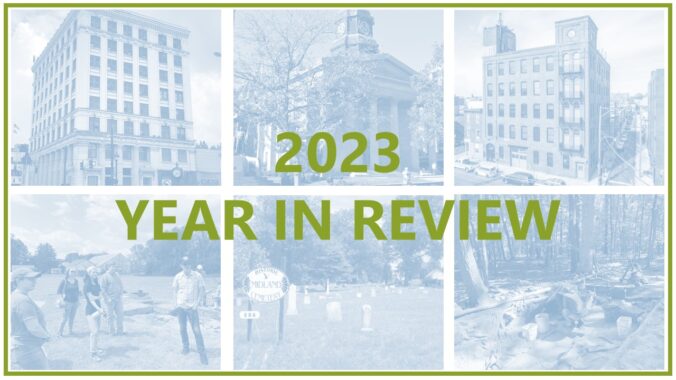The Pennsylvania Baseline Survey Team is thrilled to share the final year of findings from the Pennsylvania Baseline Survey. From June 2022 to March 2024, Year 3 of the Baseline Survey took place in 20 counties. To date, over 6,854 new resources have been recorded in 503 municipalities thanks to the efforts of our Baseline Survey Teams!
Category: Historic Preservation (Page 2 of 45)
The Battery Philadelphia is another example of a successful historic tax credit project. This latest installment of “Historic Tax Credits @ Work” shows how a classic “white elephant” was re-energized into a unique lifestyle campus that offers space for people to live, work, stay, and gather under one roof.

Advancing Black Preservation to Sustain Black Neighborhoods with The Friends of the Tanner House
As part of Black History Month, we invited Friends of the Tanner House – which we first introduced to our readers in this post – to talk about strategies for advancing Black heritage site preservation with attention to rich community and cultural engagement. In this blog post, guest contributor Chris Rogers discuss the principles behind their in-progress community visioning and preservation planning process.
I’m happy to introduce you to our newest PA SHPO staffers! We are very excited to have Jennifer Thornton join us as our National Register Coordinator, Ashley Respet as part of the above ground Environmental Review team, and Alex O’Gorman as the Historic Property Inspection Program Coordinator.
I asked each of them to answer a few questions to help us get to know them.
Included in this Just Listed! update are properties representing over three centuries of Pennsylvania history.
Properties range from Muhammad Ali’s mountain boxing retreat to a masterpiece of modern architecture to a historic district rich in the building traditions of the Pennsylvania Dutch. Read below to learn more about the Commonwealth’s newest additions to the National Register of Historic Places.
This is part of a biannual blog series highlighting the agreement documents executed by PA SHPO in accordance with Section 106 of the National Historic Preservation Act and its implementing regulations.
Between July 1 and December 31 of 2023, PA SHPO has been a signatory to approximately eleven (11) Section 106 agreement documents with five different federal agencies as part of consultation for the resolution of adverse effects to historic properties.

Apply Now! PA SHPO’s Summer 2023 Internships
Are you exploring the field of historic preservation and looking for some real-world experience? The Pennsylvania Historical and Museum Commission’s Keystone Internship Program provides opportunities to pursue your professional growth and contribute to sharing Pennsylvania’s rich heritage with the public.
We’d like to invite college and graduate school students interested in historic preservation, archaeology, community planning, cultural resources, architectural history, public history, and other related fields to apply for their summer 2024 interning experience.
While I am still enjoying the holiday high (and feeling blissfully stuffed), I am also looking forward to the many initiatives the PA SHPO has in the works for 2024.
It’s been a minute since I did a “year in review” post for the blog, so I thought I’d treat our readers to PA SHPO’s version of the ubiquitous end-of-year list.
In the spirit ICYMI, here is a list of the best posts from 2023 that you want to be sure to read. If I had to sum up the blog’s year in one phrase, I think it’s “a year of education, entertainment, and everything in between.”

The Past, Present and Future of the Keystone Historic Preservation Grant Program
2023 marks an important anniversary for the Keystone Historic Preservation Grant Program. In honor of the 30th anniversary of this important program that provides public grants to our partners to support preservation to Pennsylvania’s history.







Recent Comments